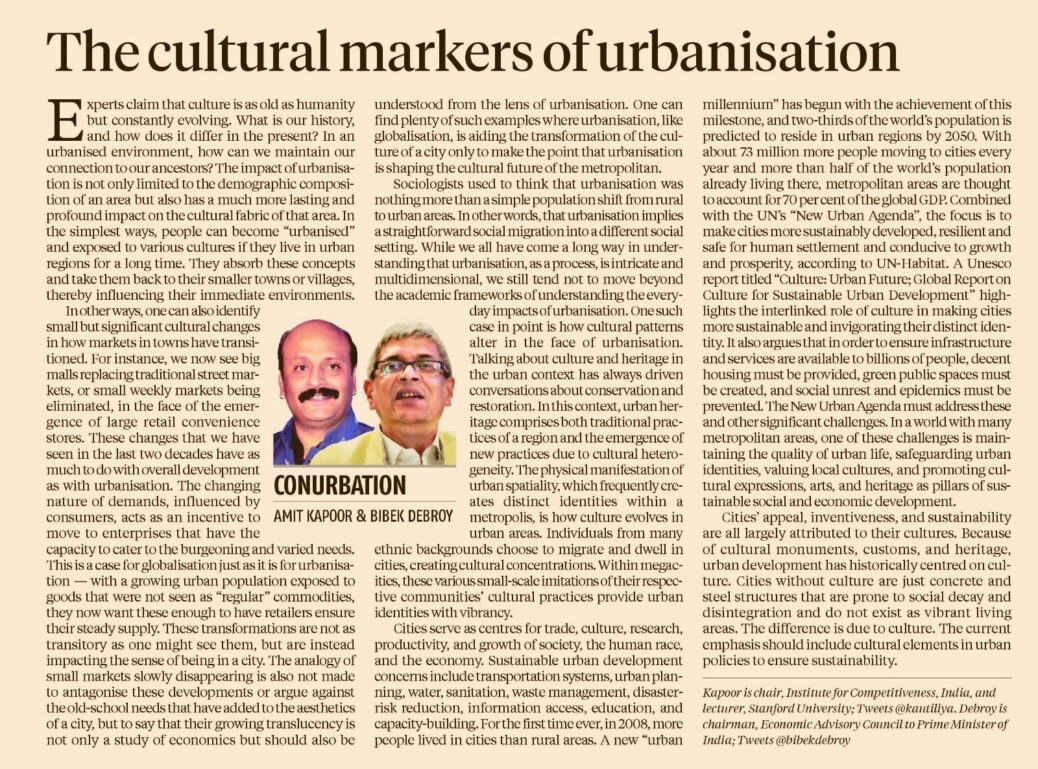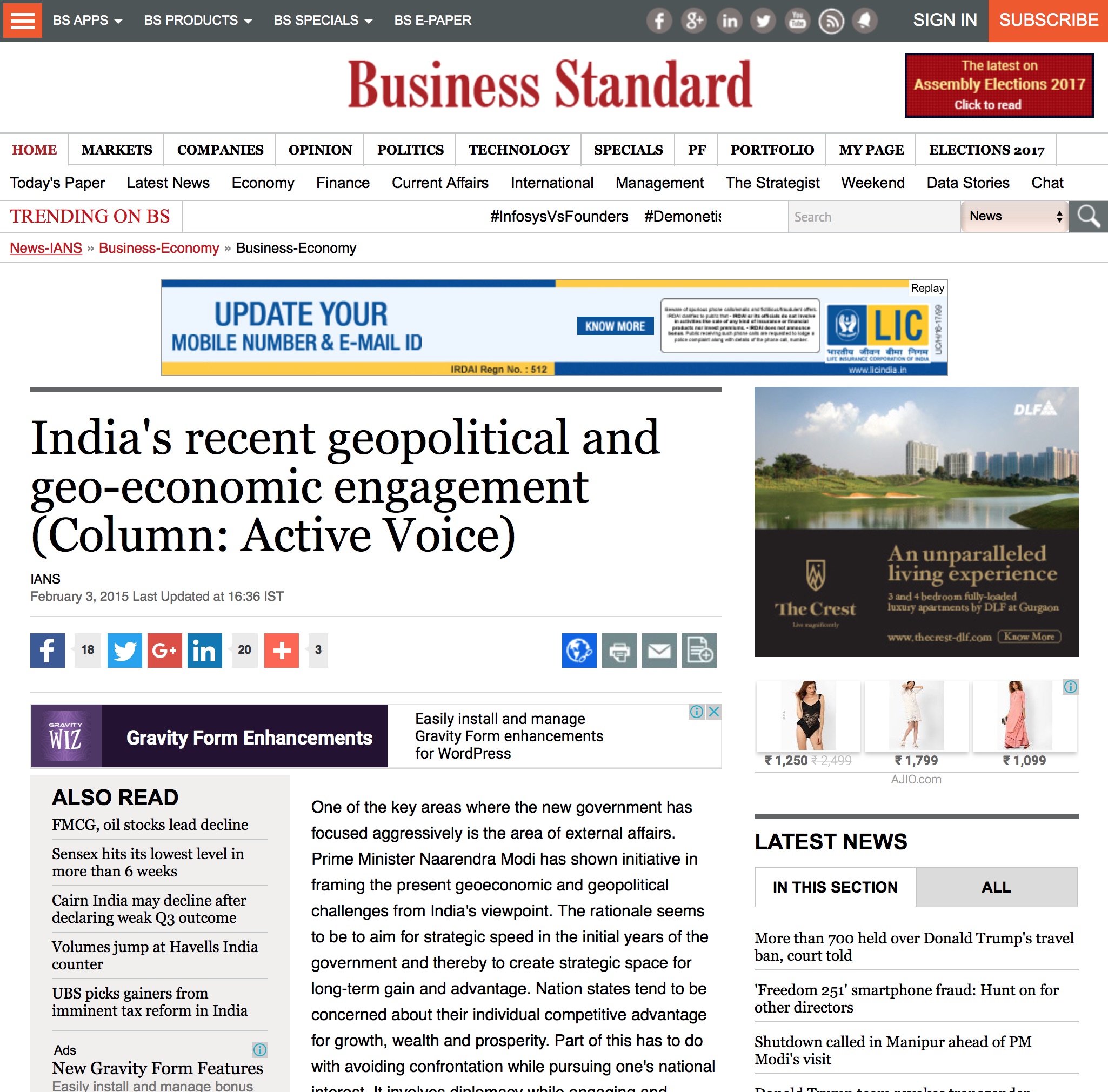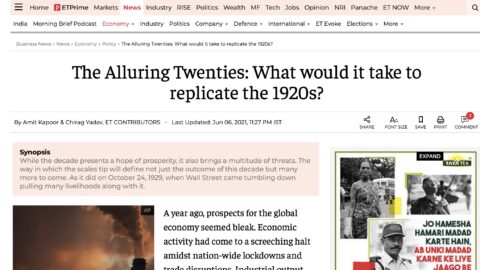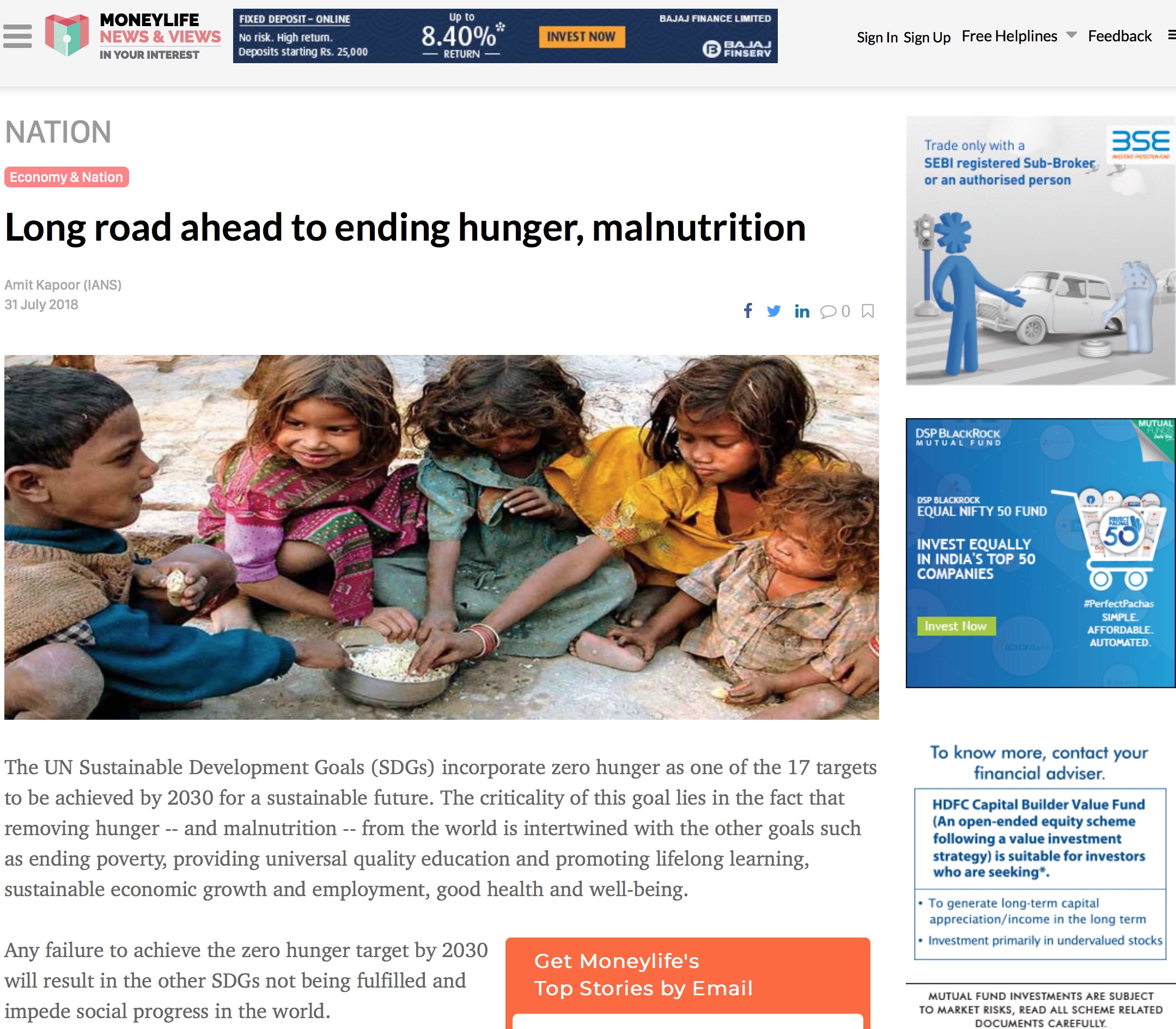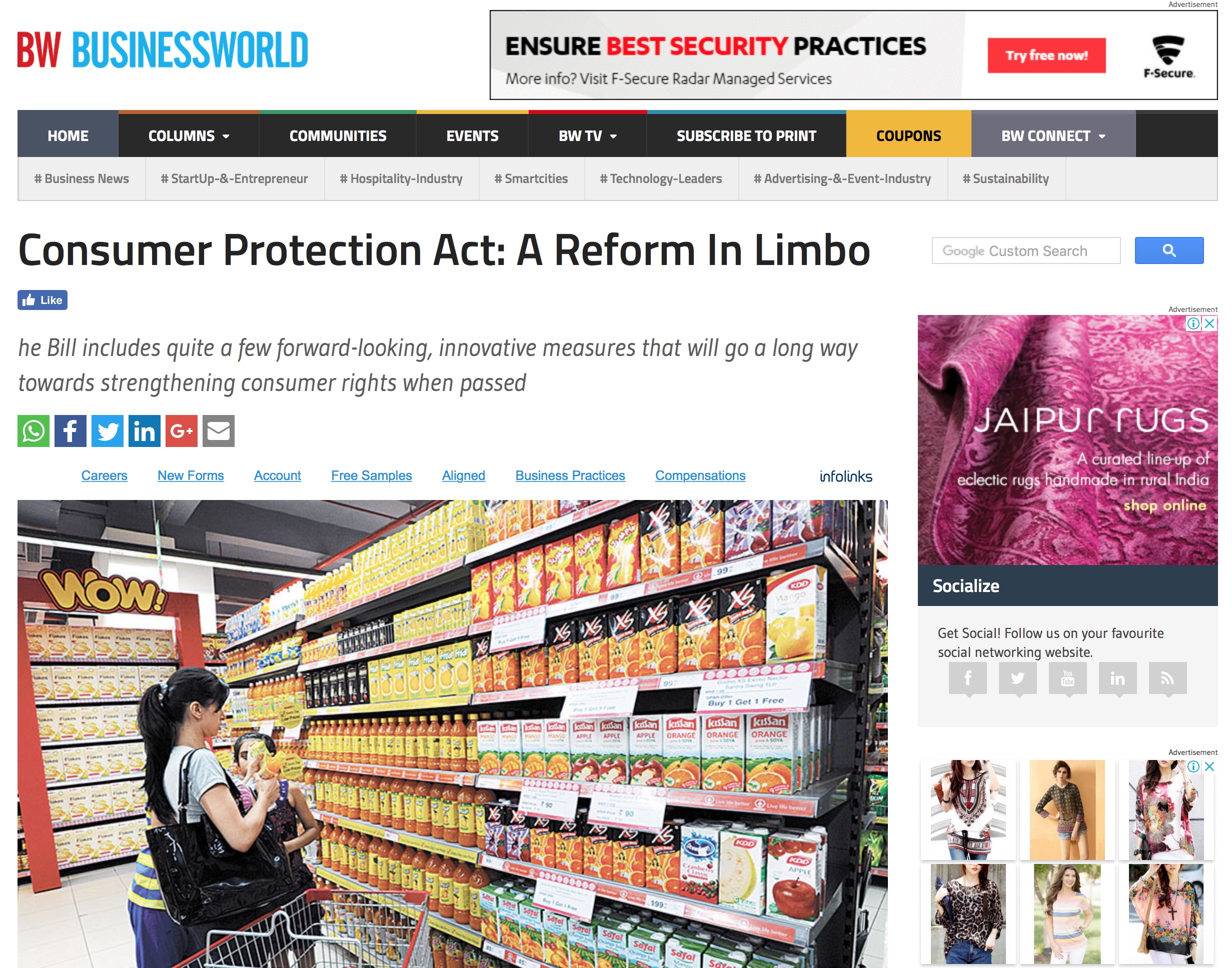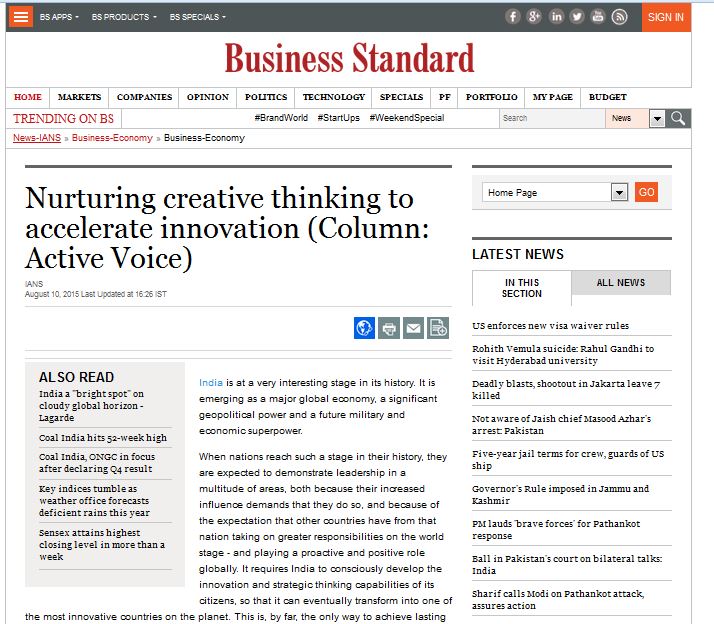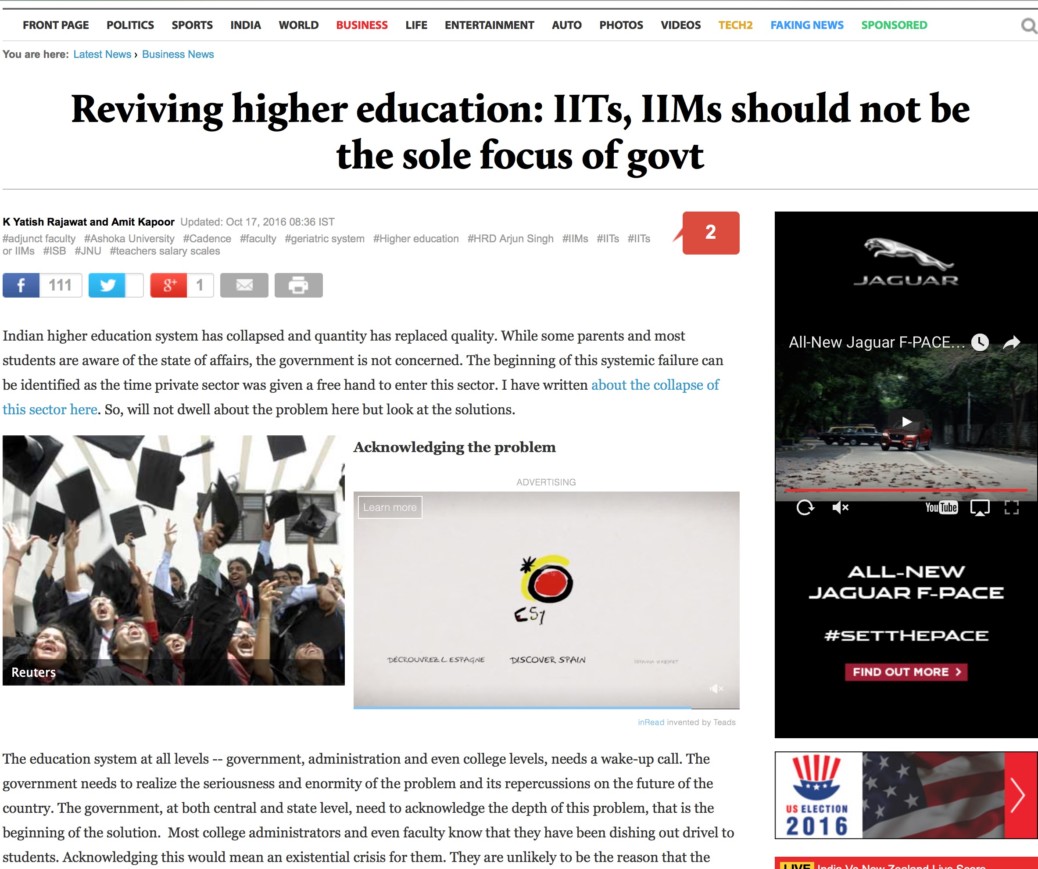The Cultural Markers of Urbanisation
Experts claim that culture is as old as humanity but constantly evolving. What is our history, and how does it differ in the present? In an urbanised environment, how can we maintain our connection to our ancestors? The impact of urbanisation is not only limited to the demographic composition of an area but also has a much more lasting and profound impact on the cultural fabric of that area. In the simplest ways, people can become “urbanised” and exposed to various cultures if they live in urban regions for a long time. They absorb these concepts and take them back to their smaller towns or villages, thereby influencing their immediate environments. In other ways, one can also identify small but significant cultural changes in how markets in towns have transitioned. For instance, we now see big malls replacing traditional street markets or small weekly markets being eliminated in the face of the emergence of large retail convenience stores. These changes that we have seen in the last two decades is as much to do with overall development as it is to do with urbanisation. The changing nature of demands, influenced by the consumers, acts as an incentive to move to enterprises that have the capacity to cater to the burgeoning and varied needs. This is a case for globalisation as it is for urbanisation – with a growing urban population exposed to goods that were not seen as “regular” commodities, they now want them enough to have retailers ensure their steady supply. These transformations are not as transitory as one might see them, instead are impacting the sense of being in a city. The analogy of small markets slowly disappearing is also not made to antagonise these developments or argue against the old-school needs that have added to the aesthetics of a city but to say that their growing translucency is not only a study of economics but should be understood from the lens of urbanisation as well. One can find plenty of such examples where urbanisation, like globalisation, is aiding the transformation of the culture of a city only to make the point that urbanisation is shaping the cultural future of the metropolitan.
Sociologists used to think that urbanisation was nothing more than a simple population shift from rural to urban areas. In other words, urbanisation implies a straightforward social migration into a different social setting. While we all have come a long way in understanding that urbanisation, as a process, is intricate and multidimensional, we still tend not to move beyond the academic frameworks of understanding the everyday impacts of urbanisation. One such case in point is how cultural patterns alter in the face of urbanisation. Talking about culture and heritage in the urban context has always driven conversations about conservation and restoration. In this context, urban heritage comprises of both the traditional practices of a region as well as the emergence of new practices due to cultural heterogeneity. The physical manifestation of urban spatiality, which frequently creates distinct identities within a metropolis, is how culture evolves in urban areas. Due to migration, individuals from many ethnic backgrounds choose to dwell in cities, creating cultural concentrations. Within megacities, these various small-scale imitations of their respective communities’ cultural practices provide urban identities with vibrancy.
Cities serve as centres for trade, culture, research, productivity, and the growth of society, the human race, and the economy. Sustainable urban development concerns include transportation systems, urban planning, water, sanitation, waste management, disaster risk reduction, information access, education, and capacity-building. For the first time ever in 2008, more people lived in cities than rural areas. A new “urban millennium” has begun with the achievement of this milestone, and by 2050, two-thirds of the world’s population is predicted to reside in urban regions. With about 73 million more people moving into cities every year and more than half of the world’s population already living there, metropolitan areas are thought to produce 70% of the global GDP. Combined with the UN’s “New Urban Agenda”, the focus is to make cities more sustainably developed, resilient and safe for human settlement and conducive for growth and prosperity, as per UN-Habitat. A UNESCO report titled “Culture: Urban Future; Global Report on Culture for Sustainable Urban Development” highlights the interlinked role of culture in making cities more sustainable and invigorating their distinct identity. It also argues that in order to ensure infrastructure and services are available to billions of people, decent housing must be provided, green public spaces must be created, and social unrest and epidemics must be prevented. The New Urban Agenda must address these and other significant challenges. In a world with many metropolitan areas, one of these challenges is maintaining the quality of urban life, safeguarding urban identities, valuing local cultures, and promoting cultural expressions, the arts, and heritage as pillars of sustainable social and economic development.
Cities’ appeal, inventiveness, and sustainability are all largely attributed to their cultures. Because of cultural monuments, customs, and heritage, urban development has historically been centred on culture. Cities without culture are just concrete and steel structures that are prone to social decay and disintegration and do not exist as vibrant living areas. The difference is due to culture. The current emphasis should include cultural elements in urban policies to ensure sustainability.
The article was published with Business Standard on May 18, 2023.

